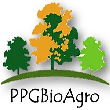Banca de QUALIFICAÇÃO: JAQUELINE AMORIM DE OLIVEIRA
Uma banca de QUALIFICAÇÃO de MESTRADO foi cadastrada pelo programa.DISCENTE : JAQUELINE AMORIM DE OLIVEIRA
DATA : 20/12/2021
HORA: 13:30
LOCAL: Sala de vídeo conferência do Campus
TÍTULO:
PLANTS OF THE FUTURE: DO SPECIES USED IN FOREST RESTORATION PRESENT STRUCTURAL ADJUSTMENTS FOR RESISTANCE TO CLIMATE CHANGE?
PALAVRAS-CHAVES:
Functional anatomy, structural adjustment, climate change, Cerrado-Amazônia.
PÁGINAS: 38
GRANDE ÁREA: Ciências Biológicas
ÁREA: Botânica
SUBÁREA: Botânica Aplicada
RESUMO:
The Amazon Forest rapidly expands over the Cerrado, and this expansion is related to environmental and climatic conditions, together with morphophysiological characteristics, which make up a set of useful parameters for understanding plant strategies, as well as contributing to project responses to anthropogenic disturbances and climate change. Arguelho et al. (2021) supported by modeling and global climate models, suggested species as ''plants of the future'', that is, species that showed promise for ecological restoration, considering future scenarios (optimistic and pessimistic) in the Cerrado-Amazon transition . Here, we combine the study of 25 anatomical and hydraulic characteristics to understand the structure-function relationships of leaf and xylem in “plants of the future” from the Cerrado-Amazon transition compared to plants from the Amazon savannah. This work aims to answer the following questions: (i) Do the ‘’plants of the future present characteristics that converge to xeromorphism when compared to species from the Amazon savannah? (ii) Which species have structural adjustments that reflect a safe hydraulic system based on secondary xylem anatomy? (iii) Based on the structural adjustments of the leaf and wood of the 'plants of the future', which ones would be interesting for use in ecological restoration? Leaf and wood material were processed according to standard plant anatomy techniques. Subsequently, analyzes were performed under an optical microscope to measure the morphoanatomical attributes. The attributes that grouped the species of SA and one of the "plants of the future" are related to less water loss through leaves and greater safety in water transport via secondary xylem, namely: abaxial epidermis, abaxial cuticle, clustering index, density of vessel, wood density, percentage of axial parenchyma, percentage of vessel, fiber wall thickness, vessel wall thickness. However, the attributes that grouped the FFLO and FSEC species reflect greater transpiration in leaves with larger leaf areas and stomatal density, and in the xylem vessel elements have larger diameters, with a higher percentage of fibers and percentage of radial parenchyma, which may reflect in water transport efficiency, this may be due to the species being located in environments with greater water availability.
MEMBROS DA BANCA:
Interno - 117000004 - MARCO ANTONIO CAMILLO DE CARVALHO
Externo ao Programa - 221762011 - JULIANA DE FREITAS ENCINAS DARDENGO



